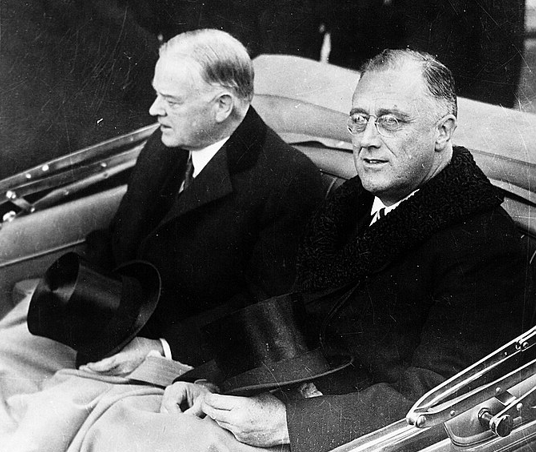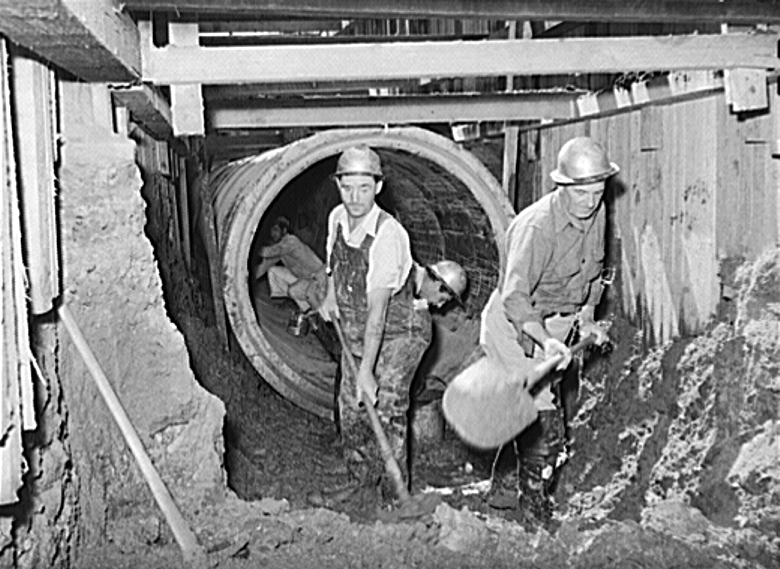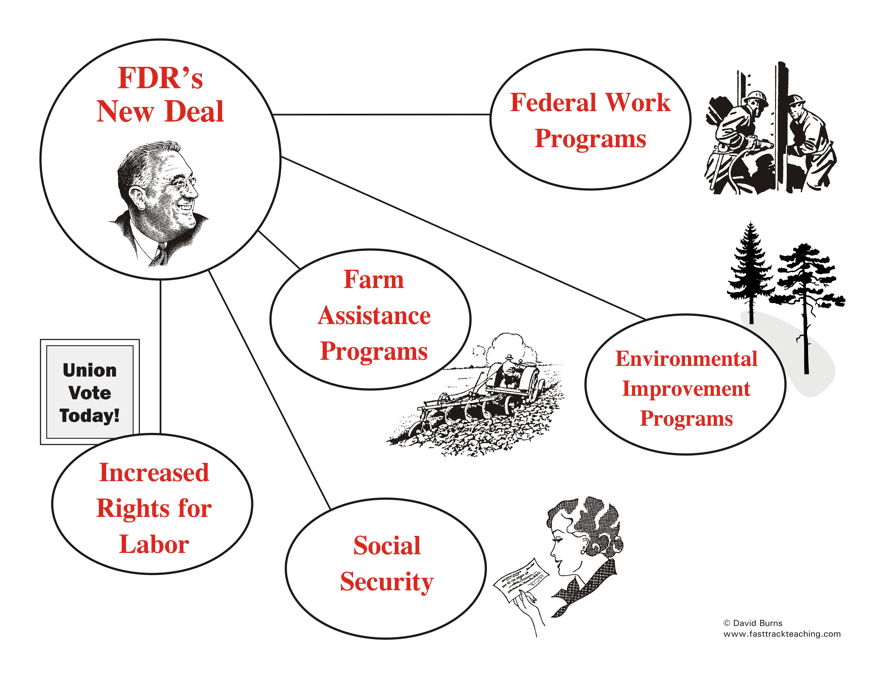|
Franklin Roosevelt and the New Deal Franklin D. Roosevelt (on the right) was elected as president in 1932. He promised voters that he would ask Congress to start government-run programs to create new jobs and get the economy growing again. Roosevelt called his programs The New Deal. When he took office in early 1933, about 25 percent of workers in the country were unemployed. It was a crisis situation for millions of families and the entire nation. |
 |
|
Roosevelt's speech that day is still well known. In the most famous lines of the speech he told Americans: "This great nation will endure
as it has endured, will revive and will prosper. . . The only thing we have to fear, is fear itself." |





